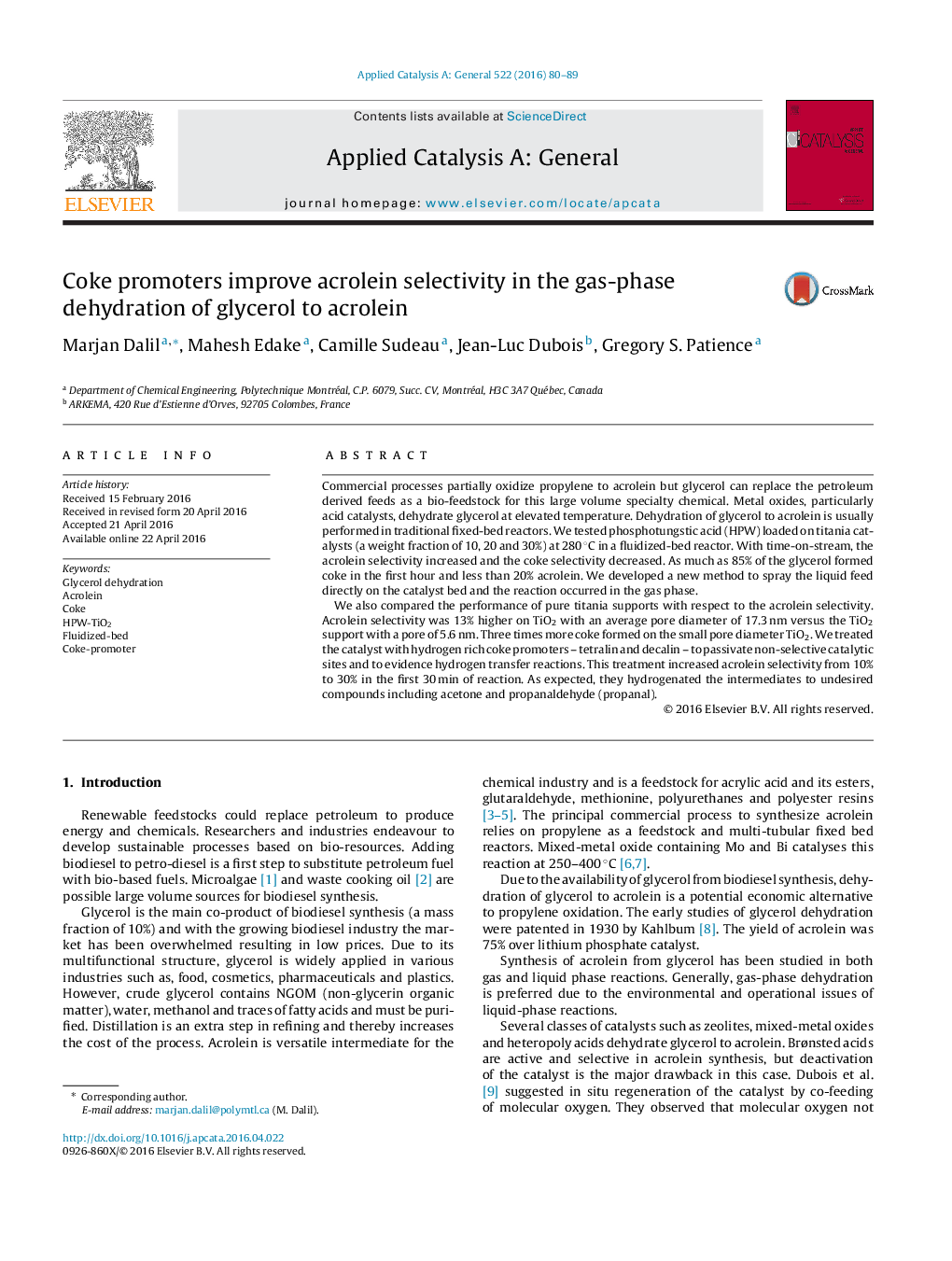| کد مقاله | کد نشریه | سال انتشار | مقاله انگلیسی | نسخه تمام متن |
|---|---|---|---|---|
| 38701 | 45788 | 2016 | 10 صفحه PDF | دانلود رایگان |
• Gas-phase dehydration of glycerol to acrolein occurred in a fluidized-bed reactor by spraying the liquid feed into the WO3/TiO2 bed.
• Large pore diameter TiO2 (17.3 nm) was 13% more selective towards acrolein than small pore diameter (5.6 nm).
• Hydrogen rich coke promoters such as tetralin and decalin passivate non-selective sites of the catalyst.
• In the first 30 min of reaction, acrolein selectivity was 3 times higher for the coke promoted catalysts.
Commercial processes partially oxidize propylene to acrolein but glycerol can replace the petroleum derived feeds as a bio-feedstock for this large volume specialty chemical. Metal oxides, particularly acid catalysts, dehydrate glycerol at elevated temperature. Dehydration of glycerol to acrolein is usually performed in traditional fixed-bed reactors. We tested phosphotungstic acid (HPW) loaded on titania catalysts (a weight fraction of 10, 20 and 30%) at 280 °C in a fluidized-bed reactor. With time-on-stream, the acrolein selectivity increased and the coke selectivity decreased. As much as 85% of the glycerol formed coke in the first hour and less than 20% acrolein. We developed a new method to spray the liquid feed directly on the catalyst bed and the reaction occurred in the gas phase.We also compared the performance of pure titania supports with respect to the acrolein selectivity. Acrolein selectivity was 13% higher on TiO2 with an average pore diameter of 17.3 nm versus the TiO2 support with a pore of 5.6 nm. Three times more coke formed on the small pore diameter TiO2. We treated the catalyst with hydrogen rich coke promoters – tetralin and decalin – to passivate non-selective catalytic sites and to evidence hydrogen transfer reactions. This treatment increased acrolein selectivity from 10% to 30% in the first 30 min of reaction. As expected, they hydrogenated the intermediates to undesired compounds including acetone and propanaldehyde (propanal).
Figure optionsDownload high-quality image (139 K)Download as PowerPoint slide
Journal: Applied Catalysis A: General - Volume 522, 25 July 2016, Pages 80–89
